By Terry Meadows
6-minute read
What’s a charcuterie? Do we need a wedding cake at all? How can I serve 150 guests on a budget? How do I include guests with allergies? If you are stuck on how and what to serve at your wedding, you are not alone.
If we haven’t met before, allow us to introduce ourselves; we are Zion Springs, an all-inclusive wedding venue that has helped hundreds of couples celebrate their wedding. We like to be transparent upfront: wedding planning and weddings are where our strengths and expertise lie, but we also like to bring education to those interested in planning a wedding of their own.
Couples can agonize over this part of their wedding planning, and we are here to help you design your menu, whether it is on a budget or choosing what to select for each season. In this article, we cover:
- Setting your wedding budget
- Meal styles
- Catering on a budget
- Menu for every season
- Fun reception foods
Setting your wedding budget
Much of what you choose to serve at your reception depends on what you decide you want to spend on your catering. So before you do anything, start with your budget. You can expect to spend an average of $75 per guest, not including your beverages. That means around $3,750 for 50 guests, heading on up to around $11,250 for 150 guests. You want to include any canapés and hors d'oeuvres that you serve before or after your wedding.
Wedding reception meal styles
When designing your wedding reception menu, you want your dishes to reflect the theme and vibe of your wedding. Do you want people moving about freely? Then buffet or food stations is your answer. If you want a more formal setting with an elegant dinner place setting, then plated service is what you are looking for. Here is a quick dive into the types of service styles you want to consider.
Plated Sit-Down
This is the most traditional style of dinner service whereby guests are seated and their dishes are served by wait staff. Generally, there is an appetizer, an entrée, and a dessert. Guests can choose from a couple of dishes, for example, meat or fish. Include a section on your wedding invitation where they can select their choice from your pre-determined options.
With the rule-of-thumb of one server per two tables, this style can be more expensive for service costs as you need wait staff, but it does give you control over what is served to each guest, and your actual food might be cheaper as you don’t need to serve as much as you would at a buffet.
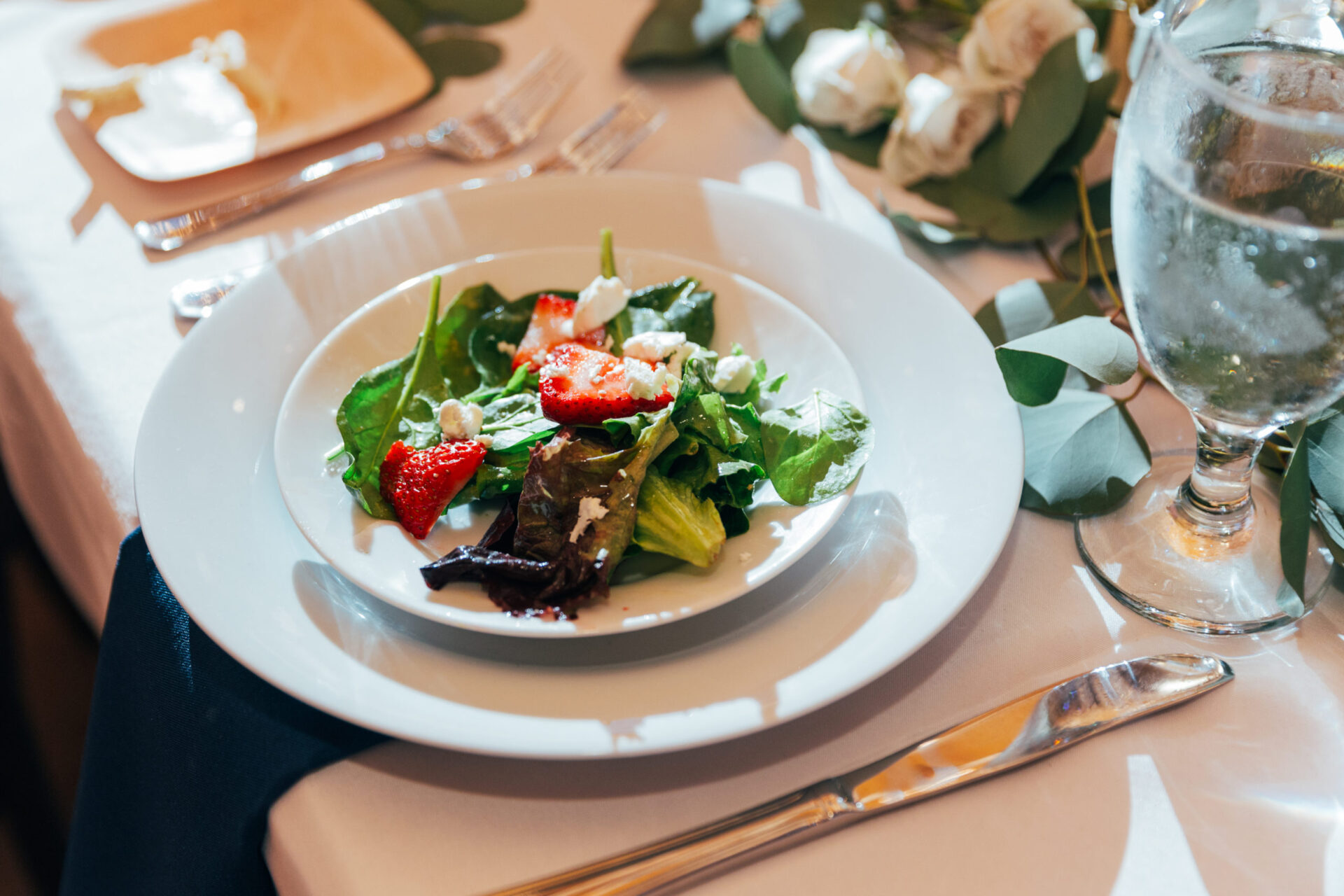
Family-Style
This is often how you serve your meals at Thanksgiving; there are multiple big platters and plates of food that are shared around the table. Each of your tables has the same food, and it is an informal way of keeping your guests seated during the meal.
Generally, you have one or two main courses along with various side dishes. This is a great way to accommodate those picky eaters, as they can easily choose what they wish from the selection on the table. This style creates more of a relaxed and casual atmosphere. People are more likely to interact with one another as they are passing dishes around the table.
Like the plated sit-down style, people are generally served at the same time and don’t have to wait in line to get their food. The cost is higher as you will want to order more food so you don’t run out at one or more tables. When you are setting your tables, you need to accommodate the various plates and platters, which means you have less room for table decorations.
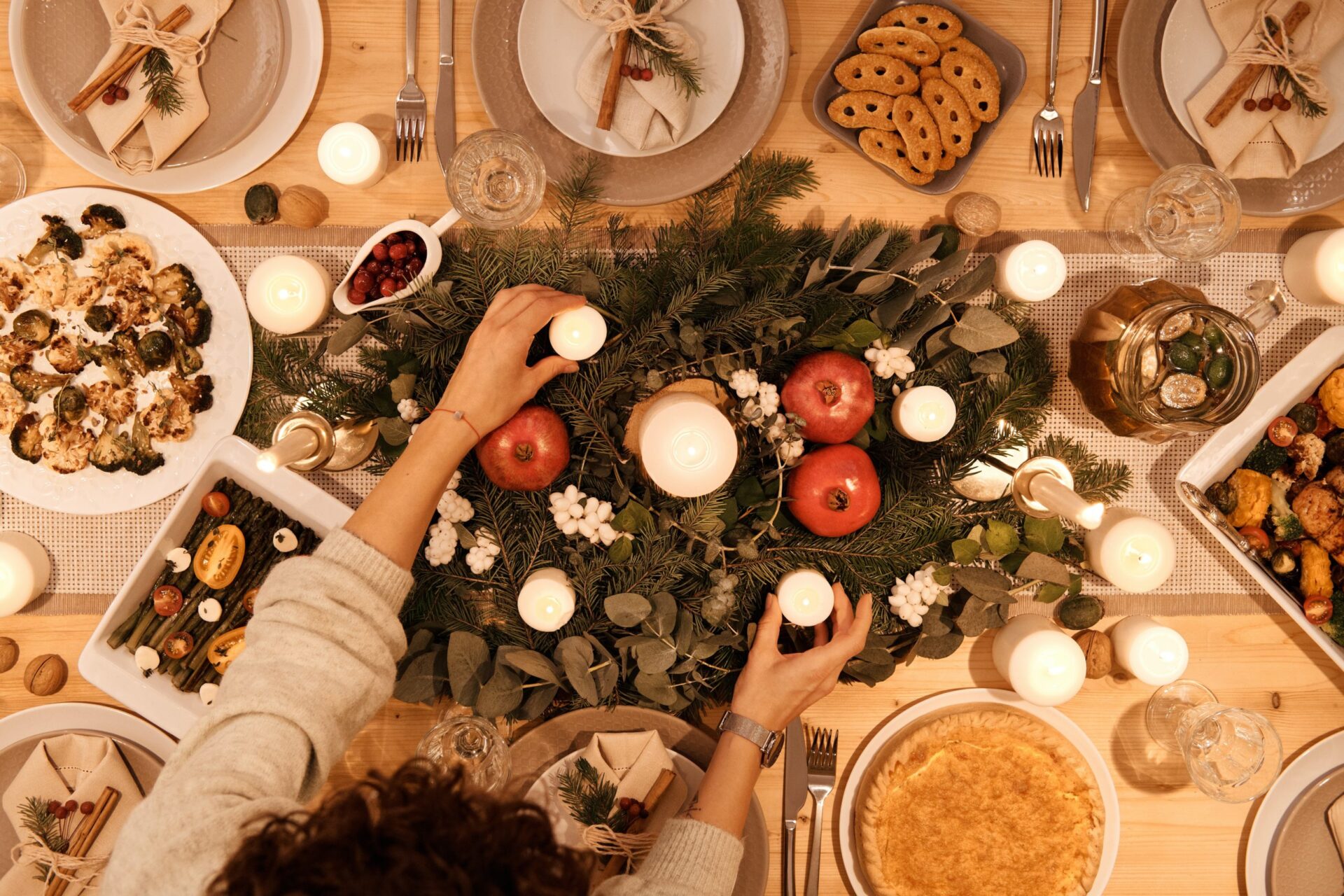
Buffet-Style
A buffet is served on a long table with a variety of dishes for guests to help themselves or served by staff behind the table. This is perfect if you have a large selection of various dishes for your guests.
Your biggest challenge is getting your guests through the lines in a timely manner. If you have a large guest list, you might want to set up a number of stations so some people are not waiting endlessly in line and then picking over the scrag ends when they finally get their turn. Have one station with two servers per 50 guests, and check that the serving staff are familiar with the food and can answer guest queries.
While you may end up paying more for food, this is offset by the smaller number of service staff on hand. Importantly, if you know you have guests with food allergies, keep the platters and dishes separate to avoid contamination.
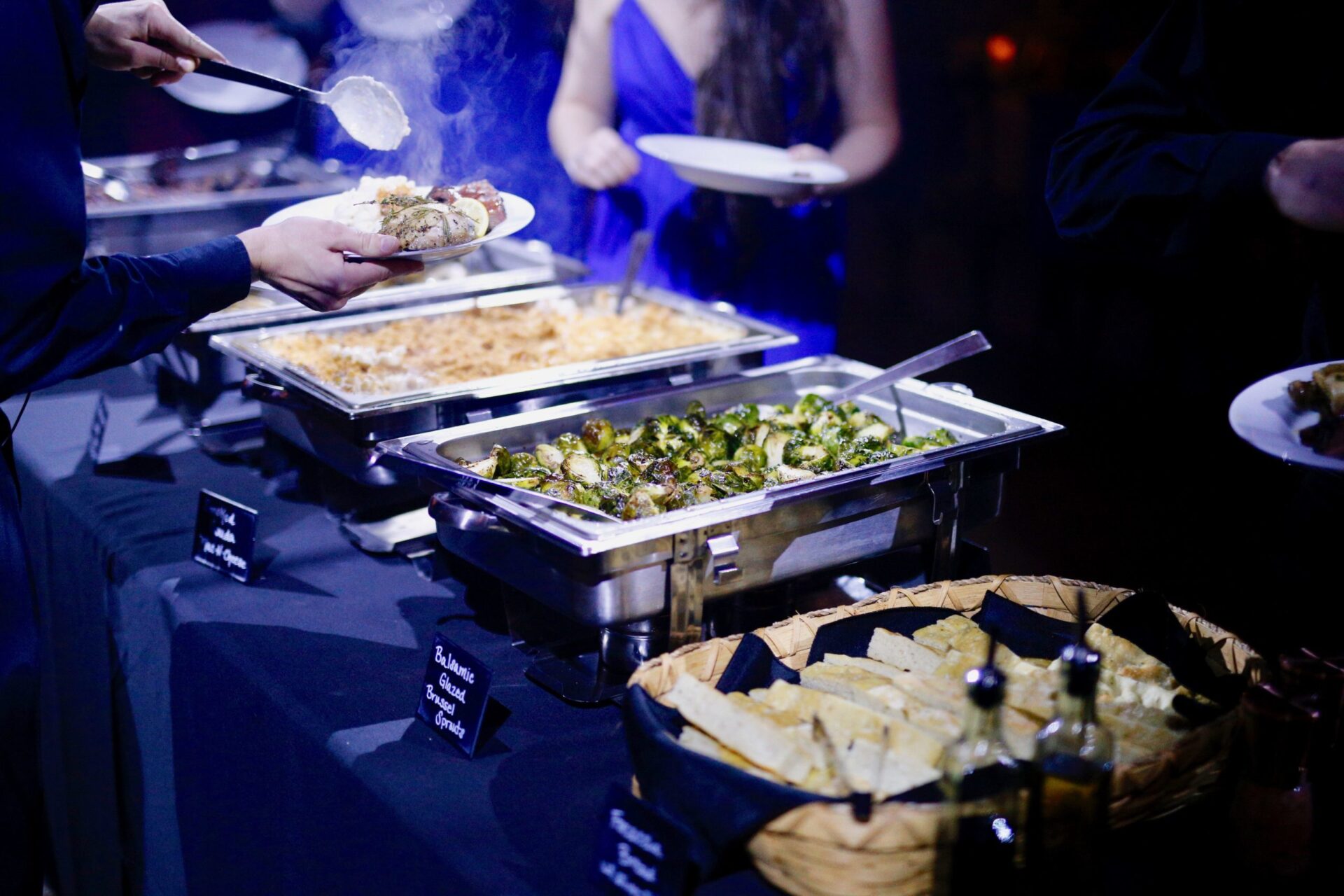
Food Stations
Food stations are gaining in popularity because of the interactive guest experience. Tables or areas are set up around the reception and offer a variety of different foods and cuisines. Each station requires a server as, generally, these are not self-service.
You can be creative with these food stations. Shake off tradition with a pizza oven, a crab shack, or a chocolate fondue. Guests have the opportunity to engage with others as they move around the stations and share their recommendations with one another.
This can get costly if you want a larger number of different stations and enough food for everyone. Make sure your venue has enough space to accommodate all the stations so as to maximize the space for an easy flow of guest movement.
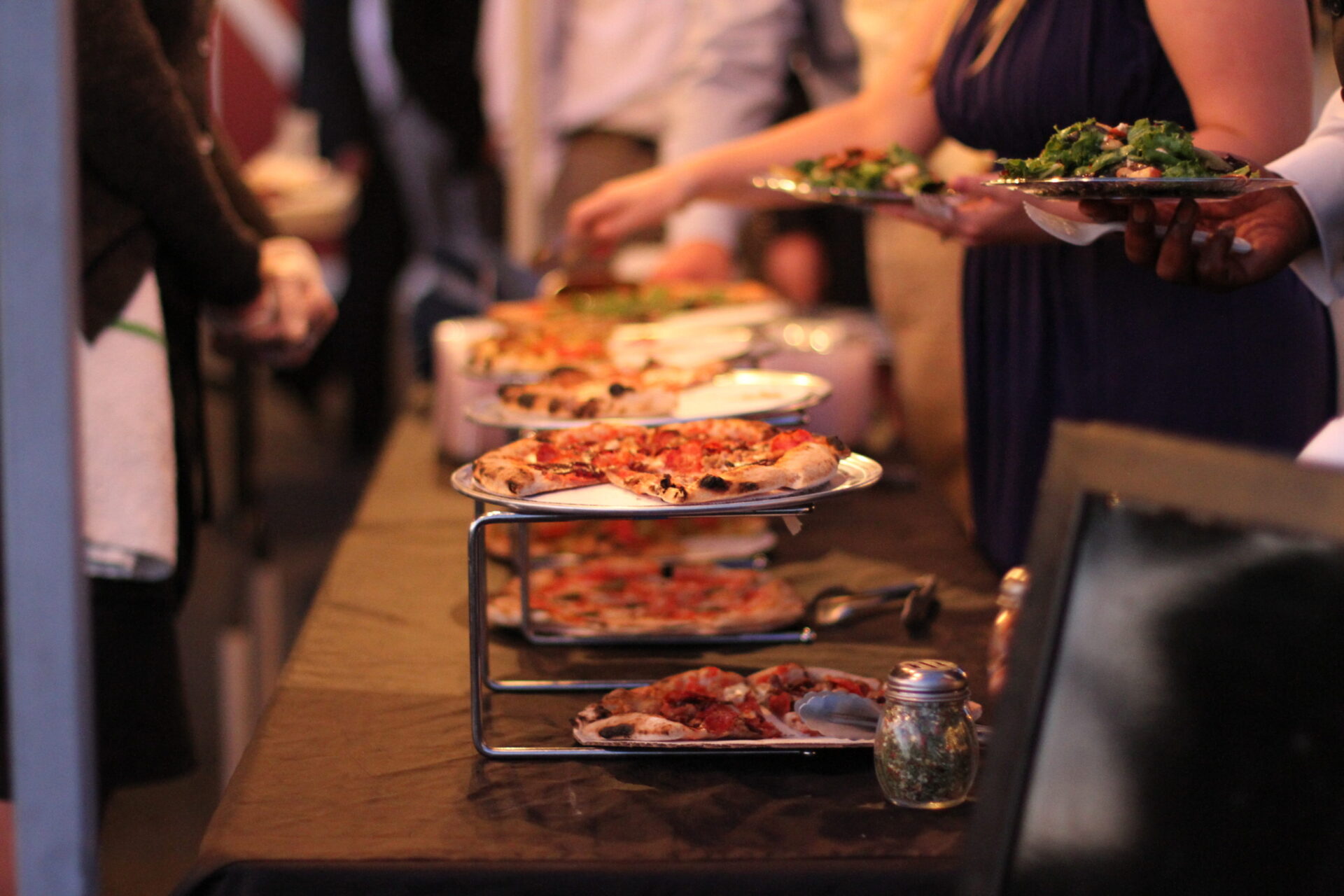
Cocktail-Style
Imagine canapés on super-drive, and you’ve got cocktail-style. There are no tables, no chairs, and no fuss. Wait staff circulate with passed trays, or you can have trays laid out around the room for guests to graze on throughout the evening. Guests can have fun trying all the different bites, and it creates natural mingling for people as they are not tied to a table and chair.
This might be your most budget-friendly way to go, as you can spend more on the actual food while avoiding the rental cost and setup fees for tables, chairs, and tableware. It leaves more room for dancing and mingling too. Another advantage is that you can offer a much wider variety of bites to your guests, instead of one or two entrées. Mix it up with an assortment of offerings so guests don’t get bored with the same platter passing by repeatedly.
While the theme of the cocktail-style is for guests to socialize, you want to spare a thought for older or infirm guests who need to sit down, so don’t get rid of all those chairs just yet. Let your guests know in advance so you can accommodate those who might need assistance.
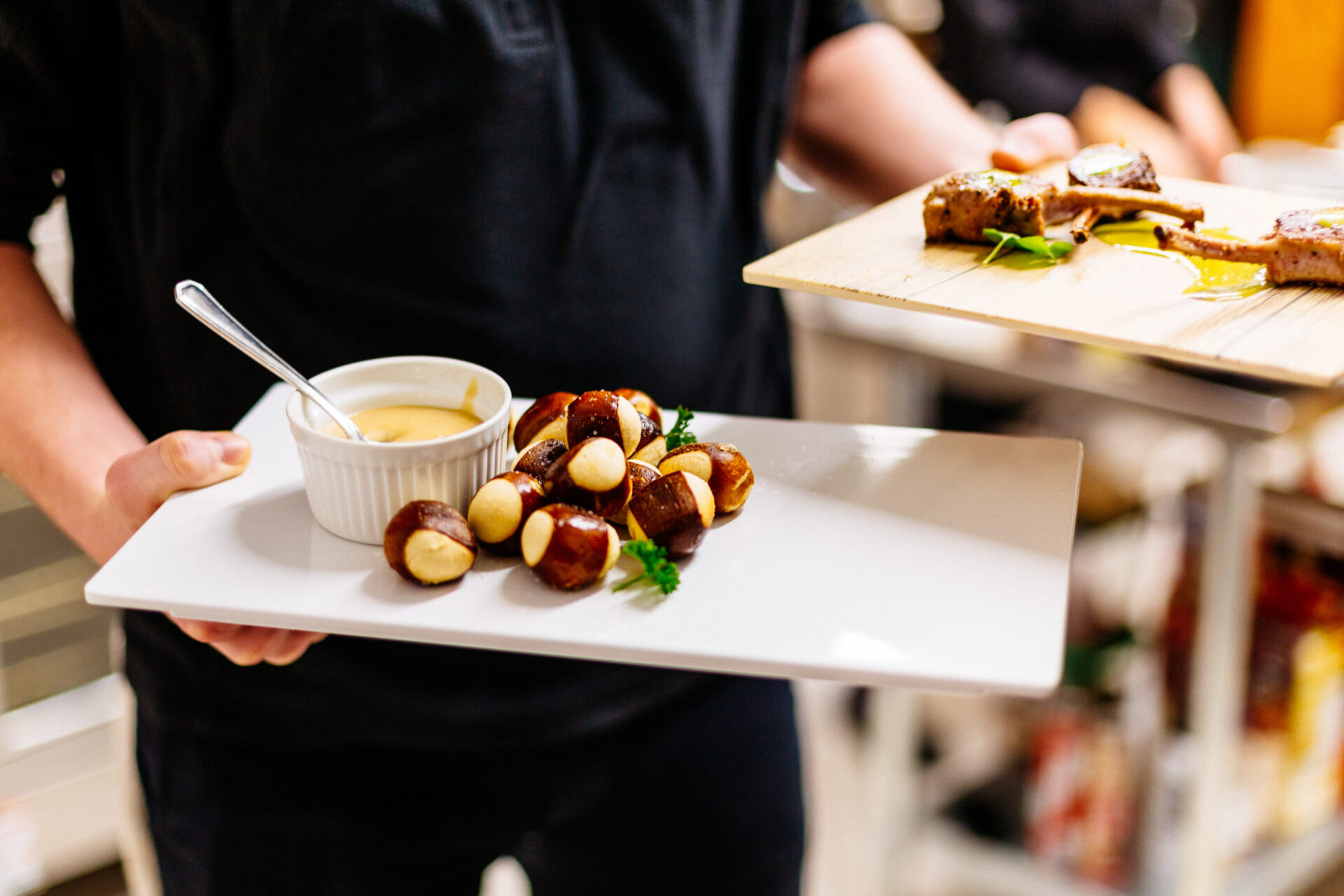
Wedding reception catering on a budget
As much as you can, go for seasonal, locally sourced ingredients. Work with your caterer and use their industry expertise to determine the optimal budget-friendly menu. They can suggest a cheaper cut of meat or a less expensive fish that eases the burden on your budget.
Generally, vegetables are cheaper than meats. Pasta is a timeless favorite and can be served in warm or cold dishes. Pizza is another way to keep costs down and appeals to most guests. Skip the red meat and go with chicken instead.
Don’t feel you have to follow tradition. Today, there is more freedom to do almost anything that appeals to you. If you are doing your own catering, why not go for a build-your-own burger/taco bar or get those sandwich-wrap platters from Costco? Food trucks are a great way to go if you have limited kitchen facilities.
Check with your local community college, as they often have culinary students who do a superb job of catering, and it’s a win-win situation with you getting great food and students getting a learning experience.
Check if a brunch or lunchtime reception is cheaper at your venue, as they are sometimes more cost-effective than the more complex, formal dinner menus. If you are having a smaller wedding, you might find a restaurant with a private dining room is ideal, especially as they might be cheaper than a banqueting venue.
Wedding reception menu for every season
Each season comes with its own unique cornucopia of flavors, and taking advantage of what is available can ensure that you are getting fresh and delectable food.
Here, our Chef DeDe has shared her top dishes for each season.
Summer
Taking advantage of the warmer weather, venture into something less traditional like a barbecue or pig-on-a-spit. You definitely want to veer towards the lighter fare during hot temperatures and focus on fresh fruits and vegetables. Add salads with a fresh dressing, and consider fish or poultry instead of the heartier beef dishes, and keep your desserts light.
DeDe’s recommendation:
- Watermelon and Feta Salad with Mint
- Grilled Branzino, Duck Fat Fried Potatoes, Prosciutto-wrapped Asparagus
Fall
Moving into the cooler weather of Fall lets you get a jump start on those rich flavors of the hearty main course. Dive into those apple, pumpkin, and cinnamon dishes with some delicious root vegetables to add their earthy seasoning. Pasta is a great go-to and the base of some heart-warming meals.
DeDe’s recommendation:
- Beet and Goat Cheese Salad with Orange-Ginger Vinaigrette
- Grilled Quail with Crispy Sage Leaves, Roasted Root Vegetables, Herbed Polenta
Winter
Comfort food is the foundation of winter wedding menus. Now is the time for those hearty soups and homey entrées. Take advantage of Thanksgiving and Christmas traditions, and don’t miss out on those rich decadent desserts.
DeDe’s recommendation:
- Farro Salad with Radish and Pistachio
- Short Ribs with Bordelaise Sauce, Truffled Mashed Potatoes, Roasted Brussel Sprouts
Spring
Bright colors, light flavors, and fresh tastes are the delight of the Spring season. Capitalize on those raw vegetables to add lightness to your dishes and the abundance of crisp fruits that complement your desserts. Add to this a light fish entrée or succulent chicken dish, and you will have your guests hankering for more.
DeDe’s recommendation:
- Heirloom Tomato and Burrata Salad with Basil Pesto
- Spring Lamb with Rosemary Chimichurri, Lyonnaise Potatoes, Sauteed Fiddleheads
Fun wedding reception foods
Why not have your wedding fare, as well as your decorations, reflect you and your partner? Here is the opportunity to express your personal flair with what you serve. It might be a favorite dish, or it could be a particular comfort food from your heritage, such as a falafel bar, fish and chips, boerewors, a donut wall, or an ice-cream bar with a selection of toppings.
You can also do interactive stations where people can shuck their own oysters or make fresh pasta with the chef. And don’t forget that scrumptious chocolate fountain with an array of marshmallows, fruit, or pretzels for dipping. Instead of a dessert, guests can create their own waffles with a variety of toppings.
What is the right style wedding reception menu for you?
You might have started with so many questions on how to build your wedding menu, and now you should have a better idea of what works best for you. Decide your budget, and then determine what theme and vibe you want for your wedding.
If you would like to read further about catering your wedding, read our article on why catering for your wedding is so expensive, which includes tips on how to save money.
While we couldn’t say everything we had on our minds, we have said a lot already. So if you’d like to learn more about planning for your wedding, you can check out our other articles.

The 12 Best Honeymoon Resorts in Virginia for Newlyweds in 2025
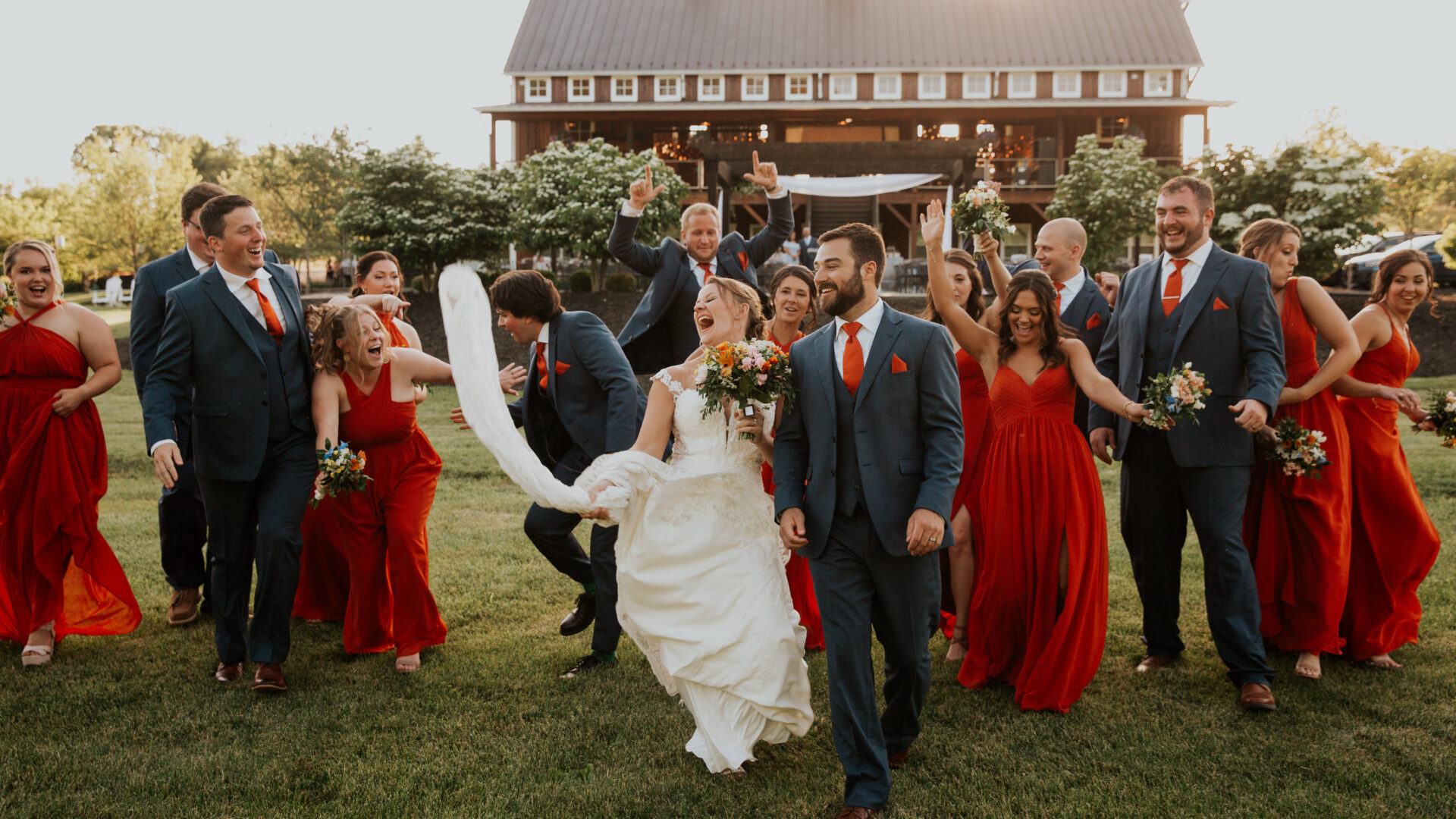
7 Wedding Reception Regrets You’ll Want to Avoid—And How to Do It Right

Jennifer and Alex’s Spring Wedding



